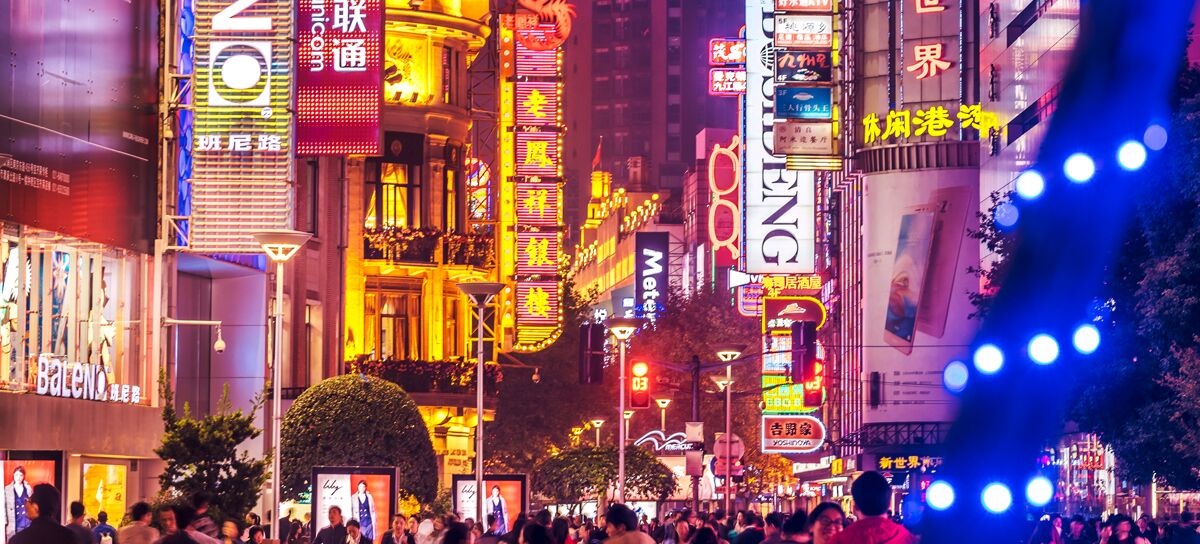China's ecommerce superpowers and how they could save your digital strategy
Chinese retailers forge ahead where Western fashion fears to tread. What can we learn from the best of CX in China? Read on for the latest Chinese retail trends, and why you can’t afford to ignore them.
Whether your brand exists completely online, or you’re IRL too, digital demand is undeniable and Western retail professionals could learn a lot from the all-in-one online empires dominating the Chinese market.
This year, China will overtake the US as the world’s largest fashion market. So we’ve curated some of the principles and best practices found in the compelling CX that Chinese consumers are engaged, entertained and encouraged to spend by. If you want to get even deeper into it, each chapter links out to a more detailed blog – so, get swatting up and impress at your next planning meeting.
Genuinely social: assemble your a-team
There are a couple of areas in which Chinese ecommerce excels socially, where Western ways just can’t yet compete.
Social ecommerce platforms
Pinduoduo, a social ecommerce app, can be shopped through ‘team purchase’ – letting users invite friends and family to get involved in a purchase, lowering the price for the buyers and creating a unique digital word of mouth for the retailer.
Superpowered influencers
Naturally! What the West calls ‘influencers’, the Chinese know as Key Opinion Leaders (KOLs). And lead opinion, they certainly do. As consumers increasingly turn to social channels for content and inspiration, the traditional search engine is on the decline, but influencer marketing is thriving.
Why the West should be watching:
The West is currently in a ‘second wave’ of ecommerce. The first wave was around building the infrastructure and laying the groundwork to fulfill online orders. Now, we’re very much into a phase where customer experience is critical: consumers want products that aren’t commoditised, they want to shop what they see on Instagram. This is inspiration and discovery-led retail. And it’s all about moving the point of inspiration as close to the point of transaction as possible. See it, buy it! Don’t give them too many clicks to change their minds.
Social media moguls (Mark Zuckerberg) know this is where the future lies, and are keen to monetise their platforms. Instagram has already become shoppable, for example. But we’re nowhere near the platform integration of the East. We still have our favourite shop’s app, our Instagram app, our banking app nicely siloed. When these apps collide, we can begin to consider our online shopping truly social.
And what of the influencers? Influencer marketing is still growing quickly in the West. And with it, the world of micro influencers. Civilians, rather than celebrities, with relatively small follower bases. While it might feel like we’re fairly sophisticated in the realms of influencer marketing, it’s still a space where brands can box smarter. Knowing who to use – and why – to build authentic traffic and engagement will be the next frontier for brands as they seek to inspire and impress their prospects.
Will video kill the instagram star?
Why the West should be watching:
We’re already set up to implement both these strategies – it’s surprising, in fact, that neither have taken off. But nobody’s really tried that hard yet. It doesn’t take a huge leap of imagination to get from where we are now to consumer accepted, in-app live streaming and shoppable content on video platforms.
ASOS, for example, uses video content within its product pages, but as this kind of in-app video content is presented when the customer is already searching and very heavily into buying mode, it doesn’t open up the same breadth of audience that Taobao’s strategy does. It doesn’t make everyone a prospect. And that’s the dream, right?
In terms of broader video ecommerce, Google has been testing shoppable links under YouTube videos, which direct to Google Express, and is making itself more shoppable overall.
From bricks to clicks and back again...
Why the West should be watching:
There is opportunity aplenty in store. As well as becoming experiential, community-led hubs – they can also provide logistical value, becoming mini-delivery centres. While we’ve not quite hit the heady heights of the Freshippo model, it’s already happening to a certain extent.
Ikea’s new model – trialling smaller stores in big cities – lets customers order online and collect from a store that’s likely fairly nearby, rather than driving out to a box store that’s miles away. This is all great news for customer convenience, of course, but it introduces huge complexity into the supply chain and has huge implications for delivery management. On top of that, the ship from store model is one of the biggest changes we’re seeing made in UK retail in 2019 and beyond.
Eastern promise: global growth potential?
How to master the East meets West delivery experience
And that’s where the gap needs to be bridged: that’s where the opportunity lies. You can enjoy a state of the art shopping experience, online or in store, and be let down by delivery. For a truly impactful, ambassador making CX, the experience needs to deliver down to the last mile. We already know that 39% of shoppers lose faith in a retailer’s ability to meet their needs if a parcel isn’t delivered in time.
From checkout to doorstep
Getting the customer to the point of purchase is one thing. To bring them back, you need to deliver. There are so many ways to stand out from the crowd from order placement to receipt. Make this often overlooked step your sweet spot. As Sorted CEO, David Grimes says: ‘carry [your] brand identity all the way to your customer’s doorstep’.
So how can you do that?
Communicate consistently: taking control of courier communications is essential. If a customer places an order with you, and then receives updates from a random carrier – in their tone of voice, with their logo – it creates a disjointed, disconnected experience. It’s possible (it’s preferable!) to offer branded shipment tracking pages and outbound communications, so the customer knows who they’re dealing with and which purchase that random text message refers to.
Give them transparency: 80% of UK consumers said a ‘live’ view of their order, giving them visibility and regular updates at each stage of the delivery process, was more important than the cost of delivery. Customers value transparency and control.
Get into ‘God mode’: To give them transparency and a truly seamless experience, delivery centre managers need it too, through integrated checkout and delivery management solutions.
Best of both worlds
How are fashion retailers spending their digital transformation budgets?
See how you compare

